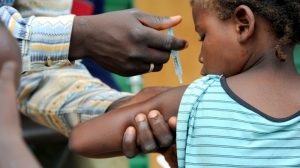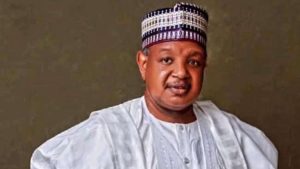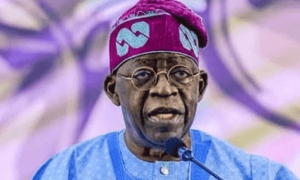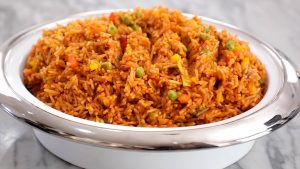‘Perpetual foreigner’: Photos explore Asian American belonging in everyday spaces
Written by Dan Q. Tham, CNNThis feature is part of CNN Style’s new series Hyphenated, which explores the complex issue of identity among minorities in the United States.Andrew Kung was a teenager visiting New York when he was first called a racial slur. The Chinese American photographer grew up in San Francisco’s Sunset District, home to a large Asian population, which “almost felt like a second Chinatown,” he said in a video interview. He was surrounded by people who looked like his parents and grandparents, and who ate the same food as he did. But, on one of his first trips to the East Coast, Kung was crossing the street when a sanitation worker yelled at him, “Get out of the way, chink!””That was really the first time that I was like, ‘Wow,'” Kung recalled, “Even in a city like New York, I feel like the ‘other.’ I almost feel hyper-targeted, when I felt so invisible at the same time.”A rash of anti-Asian hate crimes during the Covid-19 pandemic has sparked a nationwide discussion about the often overlooked struggles of Asian American and Pacific Islander (AAPI) communities. Even now, more than a decade after a teenage Kung was first called a racial epithet, people are still experiencing racialized physical and verbal attacks, especially in diverse places like New York City.Kung recreates his vision of the “all-American” family in this beach portrait, captured in Queens, New York, at dusk. Credit: Courtesy of Andrew Kung”It’s another reminder that we are perpetual foreigners,” said Kung, who moved to Brooklyn in 2016. “We’re told to go back to our countries, when this is our home country.”This idea has directly inspired Kung’s latest project, “Perpetual Foreigner,” a collection of over a dozen photographs of Asians occupying “everyday American spaces,” like parks or beaches, that Kung said usually elicit images of White families and individuals. “I wanted to put Asian faces and Asian bodies in those spaces,” said Kung, who writes on his website that his work aims to “normalize Asian American beauty, belonging, and individuality.””These are the spaces that we inhabit,” he said. “And we deserve to be just as American as anyone else.”Challenging stereotypesKung came up with the idea a few months into the pandemic following a conversation with his girlfriend, Kathleen Namgung, a Korean American who became a naturalized US citizen in 2016. Namgung, who has now lived in the country for almost 20 years, recalled an incident in school where a classmate was reprimanded for writing “let’s all bomb Korea” on a table. “When I look back now, I can only imagine how frazzled and heartbroken my parents must have been,” she said in a video interview from New York. “They were super excited to bring their kids to a new country, only for their kids to get ostracized at school like that.”A black-and-white image from Kung’s new series features Namgung reclined in a bedroom with an American flag draped against the wall. Looking directly into the camera lens, she appears at ease. “I was really inspired to put her into this all-American environment,” Kung said, “where you can just look at the photo and be like, ‘OK, she belongs there.’ She’s not a perpetual foreigner. She has just as much right as anyone to proudly hang this large American flag in her bedroom.”Kung photographed his girlfriend Kathleen Namgung against an American flag. Credit: Courtesy of Andrew KungIn another photograph, reminiscent of a scene from Oscar-winning movie “Moonlight,” a father carries his two young children at the beach in blue twilight. Kung said he wanted to highlight the intimacy in Asian families and counter the stereotype of Asian parents being emotionally distant or unaffectionate. Kung included an image of his own parents, Eric Kung and Ping Huang, in the series as well. The smiling pair are depicted holding each other in a park before sunset on a spring day, with a burst of pink magnolia blossoms visible in the background.The photographer said he wanted to include his parents in the project because he is inspired by their love story. His father served in the military in North Carolina and his mother had immigrated to South Carolina from China to study music. They met at a restaurant where Kung’s mother worked and married in 1989. “I wanted to show people a mature love, from my lens as their child,” Kung said. “When my dad was in the army, my mom immigrated here to study at a US school, they settled down in the Bay Area and had me. How much more American can you get?”Finding the nuanceWith the recent spike in violence and discrimination targeted at the AAPI community, Kung said that this project has taken on even greater importance. In the first three months of 2021, hate crimes against Asians in 22 of the country’s largest cities jumped by 194% compared to the previous year, according to a recent study by the Center for the Study of Hate and Extremism at California State University, San Bernardino. As a balm to the anger and discrimination, the photographer hopes to highlight the “beauty of Asian-Americans and what Asian joy looks like.”Kung’s parents Eric Kung and Ping Huang seen relaxing on a picnic blanket in the late afternoon sun. Credit: Courtesy of Andrew KungThese ideas are evident in Kung’s previous projects, too. In 2018, he used photography to challenge the Black and White racial binary in the American South by spotlighting Chinese American communities living in the Mississippi Delta. And in his 2020 series, “The All-American,” Kung portrayed Asian masculinity in its many incarnations — from a denim-clad man sitting on his bed surrounded by posters of Jackie Chan and Jeremy Lin to a surreal scene of an office worker in a kimono-like jacket, framed by bamboo plants — to counter pervasive stereotypes of the “desexualized” Asian-American male. “For so long, Asian Americans have been invisible,” Kung said. “They’ve been seen as the model minority who put their heads down and just work hard. But there’s such a nuance in what it means to be Asian American in the US.”







